The Kisokaido Route, Depicted by the Masters of Japanese Prints
Eisen, Hiroshige, and Kuniyoshi: all three represented this main route that wound through the mountains, connecting Edo and Kyoto.
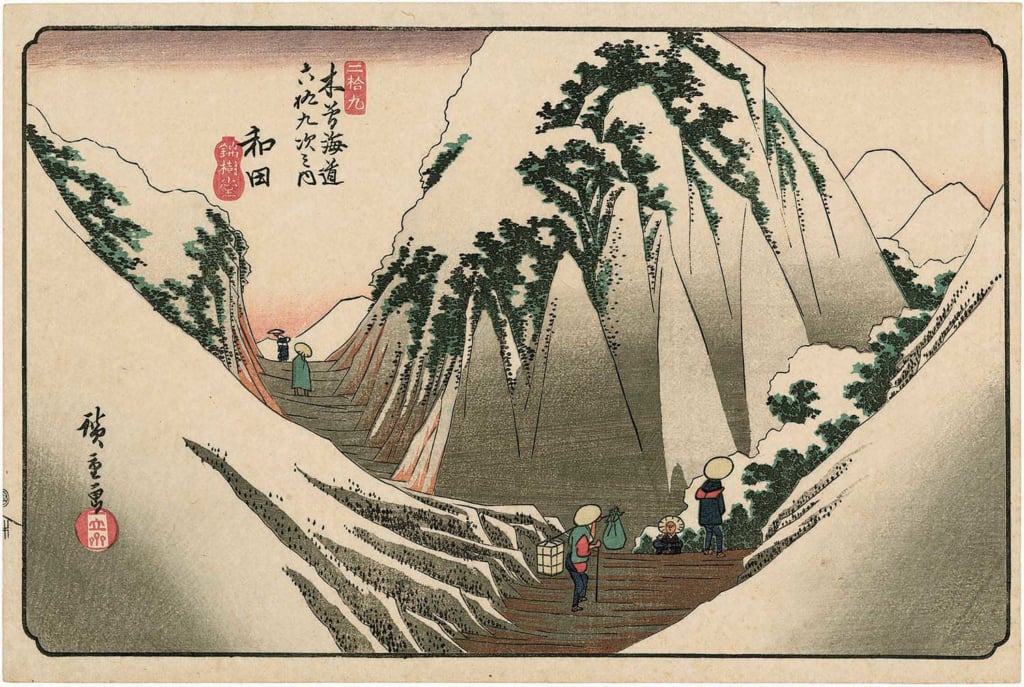
“Wada”, Utagawa Hiroshige © Fundacja Jerzego Leskowicza
Snow-capped summits, little hamlets nestled in a valley at the foot of the mountains, frail boats navigating on the rivers, lashed by the rain… The 150 engravings compiled in the book Voyage sur la route du Kisokaido : de Hiroshige à Kuniyoshi (Journey on the Kisokaido Road: From Hiroshige to Kuniyoshi), taken from the eponymous exhibition organised by the Musée Cernuschi that ran from October 2020 until January 2021, reveal the landscapes that lined this road. The Kisokaido (also known as Nakasendo) was one of Japan’s ‘five routes’ (Gokaido), the main roads established during the Tokugawa period (1603-1868).
Less well known than the Tokaido route, which connected Edo and Kyoto along the coast and was made famous by Utagawa Hiroshige thanks to his series The Fifty-Three Stations of the Tokaido, the Kisokaido route winds through the mountains in the heart of Honshu, and is interspersed with 69 stations.
A route as a pretext for folkloric representations
This series of prints, created between 1835 and 1838, was first and foremost the joint work of Keisai Eisen and Utagawa Hiroshige. These two central figures in ukiyo-e, which can be translated into English as ‘pictures of the floating world’, produced consecutively 24 and 47 engravings of this legendary route. Utagawa Kuniyoshi then took up the baton and decided to represent the landscapes found along the road in a less literal manner. Thus, the artist drew inspiration from classic literature, puppet theatre, and Japanese folklore in his engravings: as a result, he depicted characters with no connection to the relay with which they are associated. These etchings were displayed in public for the first time during the 2020-2021 exhibition at the Musée Cernuschi.
In addition to his engravings, Utagawa Hiroshige produced sketches while he was travelling along the Kisokaido route, and these can now be seen in the permanent collection at the British Museum.
Voyage sur la route du Kisokaido : de Hiroshige à Kuniyoshi (2020) (‘Journey on the Kisokaido Road: From Hiroshige to Kuniyoshi’), a book drawn from the exhibition of the same name, held at the Musée Cernuschi from October 2020 until August 2021, is published by Paris Musées.
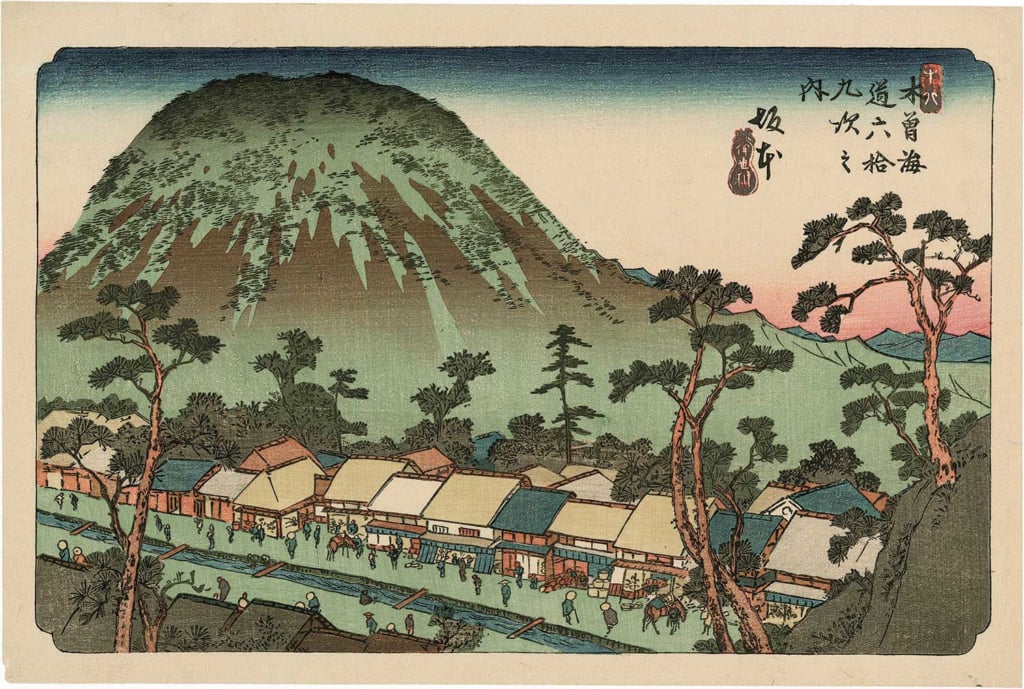
'Sakamoto', Keisai Eisen © Fundacja Jerzego Leskowicza
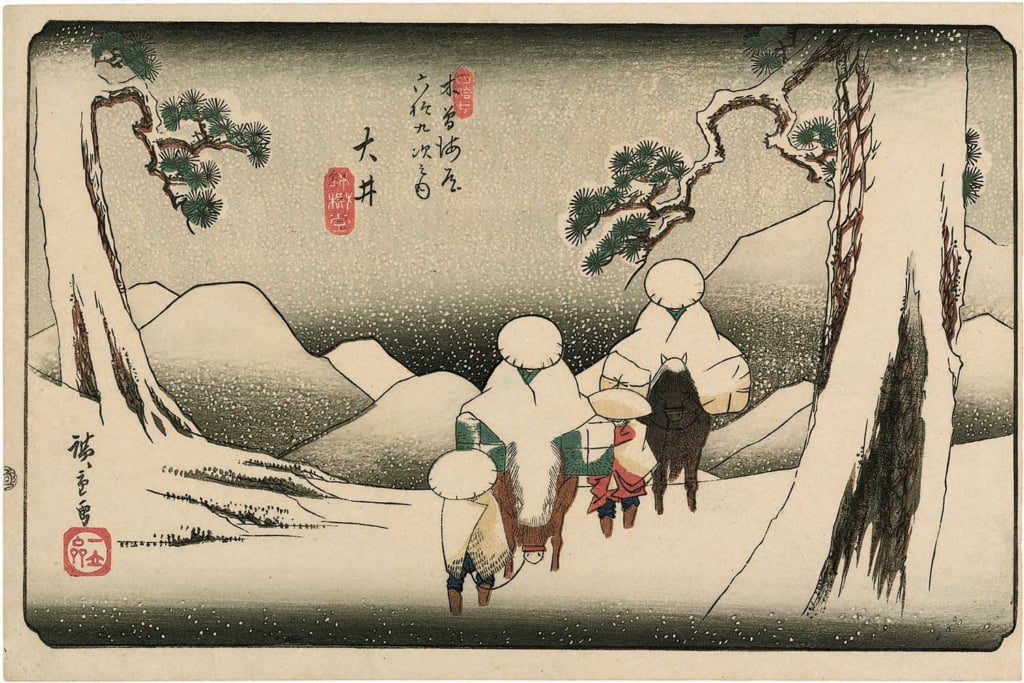
'Oi', Utagawa Hiroshige © Fundacja Jerzego Leskowicza
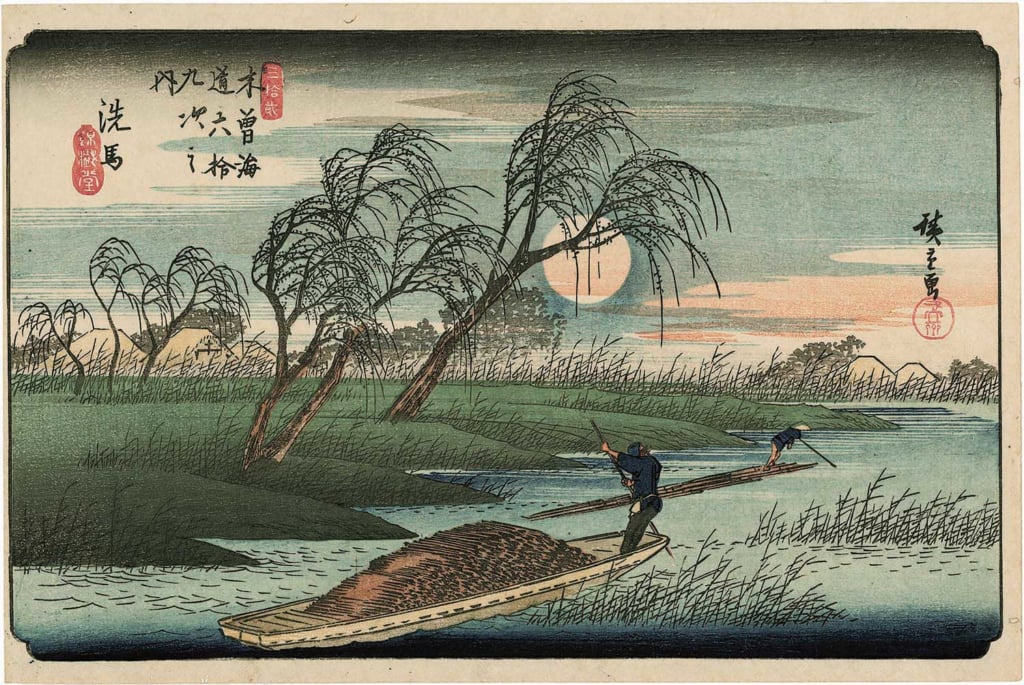
'Seba', Utagawa Hiroshige © Fundacja Jerzego Leskowicza
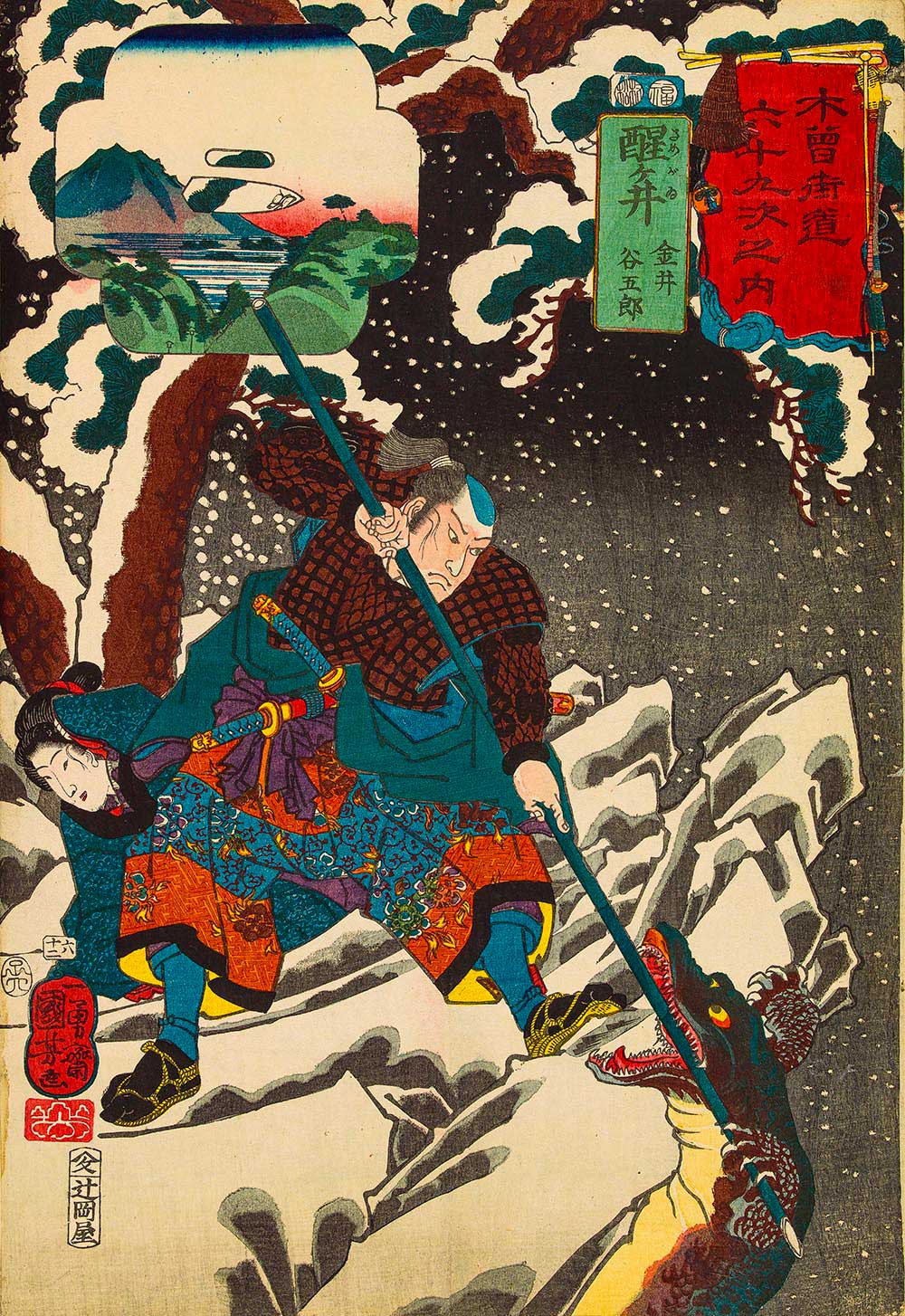
'Samegai Kanai Tanigoro', Utagawa Kuniyoshi © Paris-Musées-Musée-Cernuschi
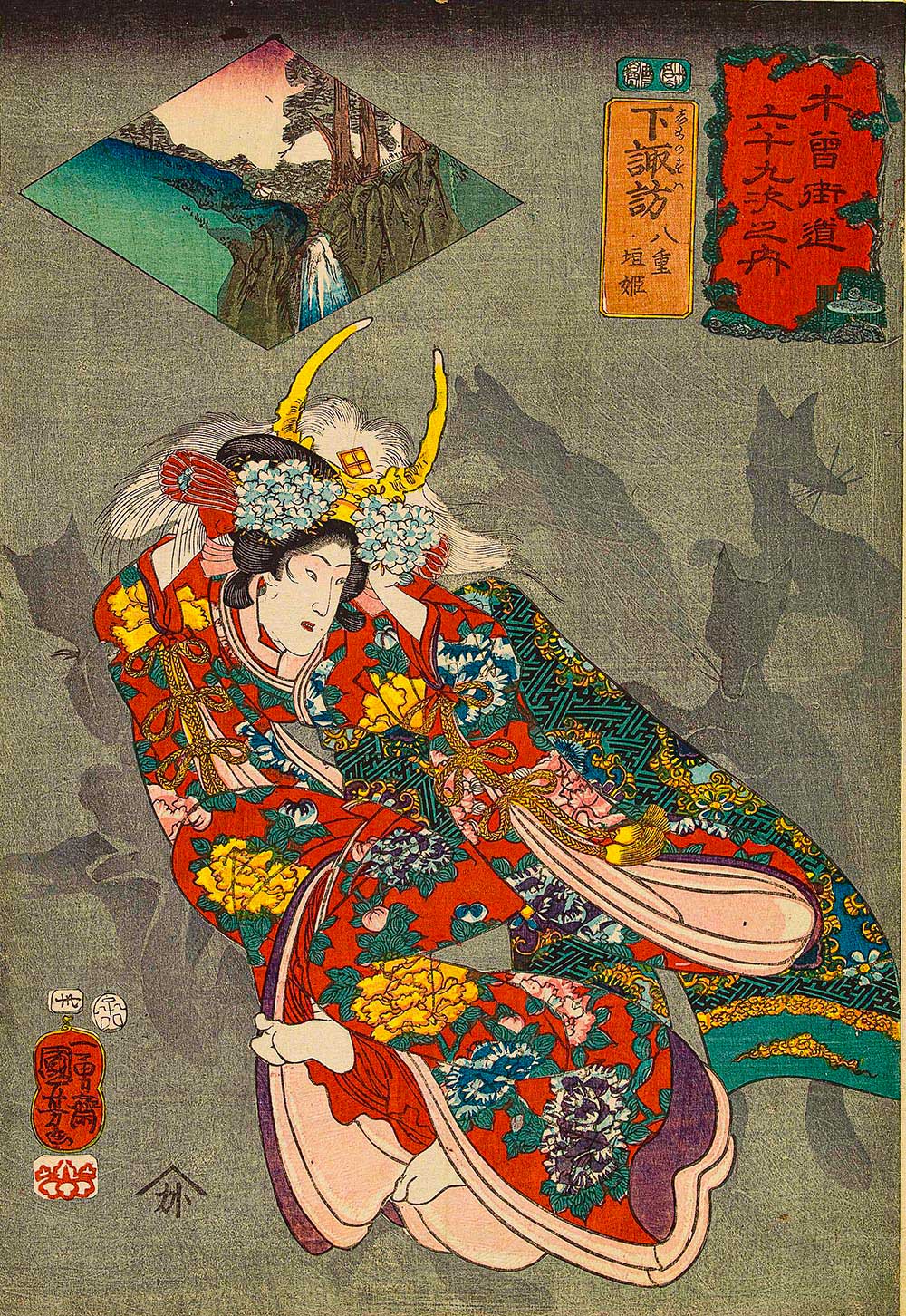
'Shimosuwa Yaegaki hime', Utagawa Kuniyoshi © Paris-Musées-Musée-Cernuschi
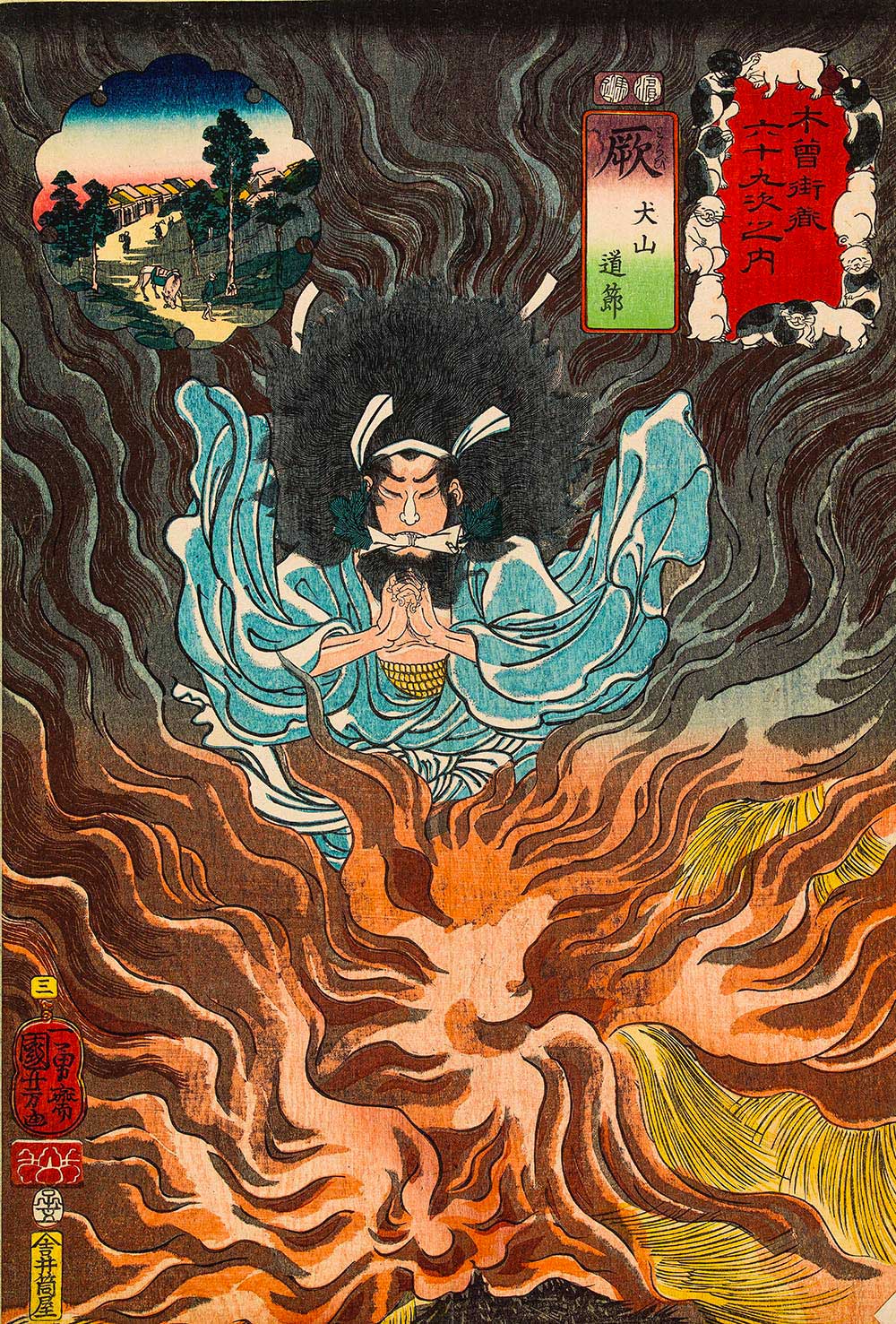
'Warabi Inuyama Dosetsu', Utagawa Kuniyoshi © Paris-Musées-Musée-Cernuschi
TRENDING
-
A House from the Taisho Era Reveals Its Secrets
While visiting an abandoned building, Hamish Campbell discovered photographs the owner had taken of the place in the 1920s.

-
The Taboo-Breaking Erotica of Toshio Saeki
The master of the 1970s Japanese avant-garde reimagined his most iconic artworks for a limited box set with silkscreen artist Fumie Taniyama.

-
With Meisa Fujishiro, Tokyo's Nudes Stand Tall
In the series 'Sketches of Tokyo', the photographer revisits the genre by bringing it face to face with the capital's architecture.

-
Masahisa Fukase's Family Portraits
In his series ‘Family’, the photographer compiles surprising photos in which he questions death, the inescapable.

-
Hajime Sorayama's Futuristic Eroticism
The illustrator is the pioneer for a form of hyperrealism that combines sensuality and technology and depicts sexualised robots.





